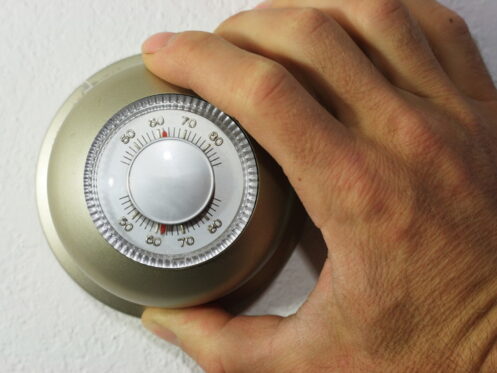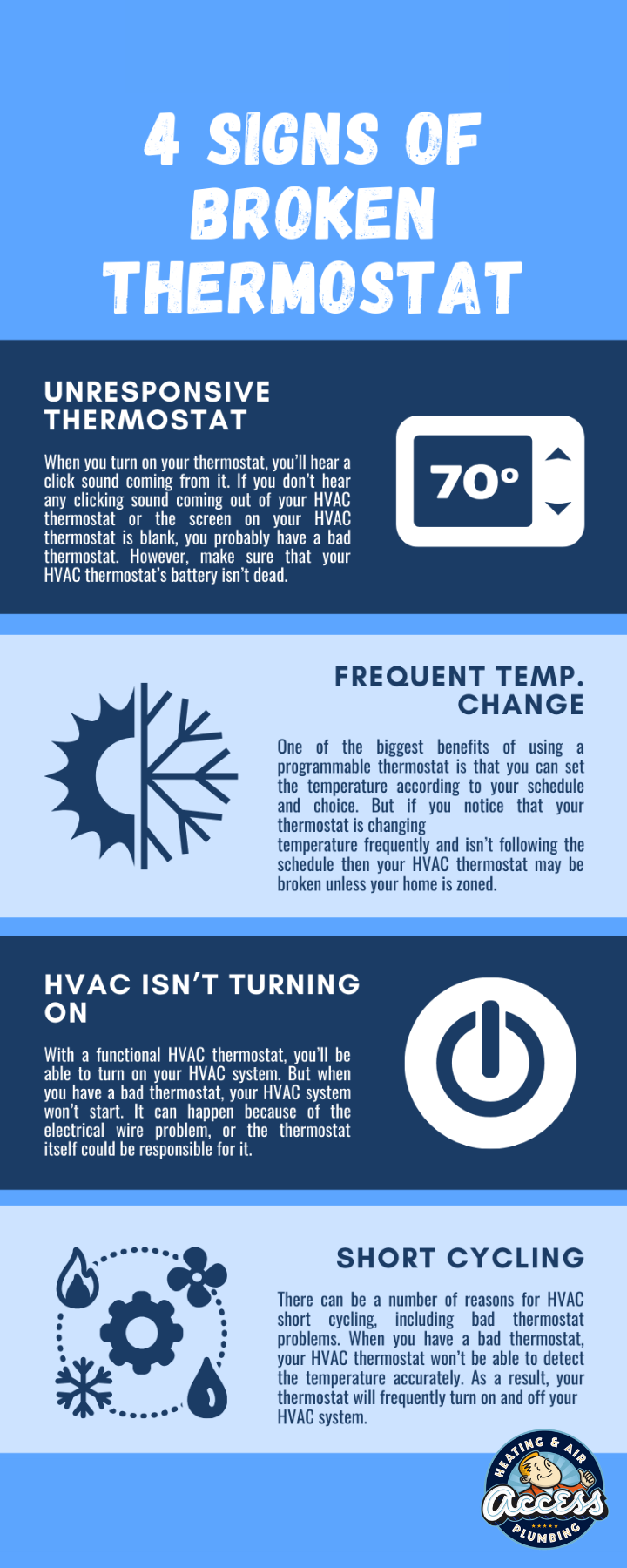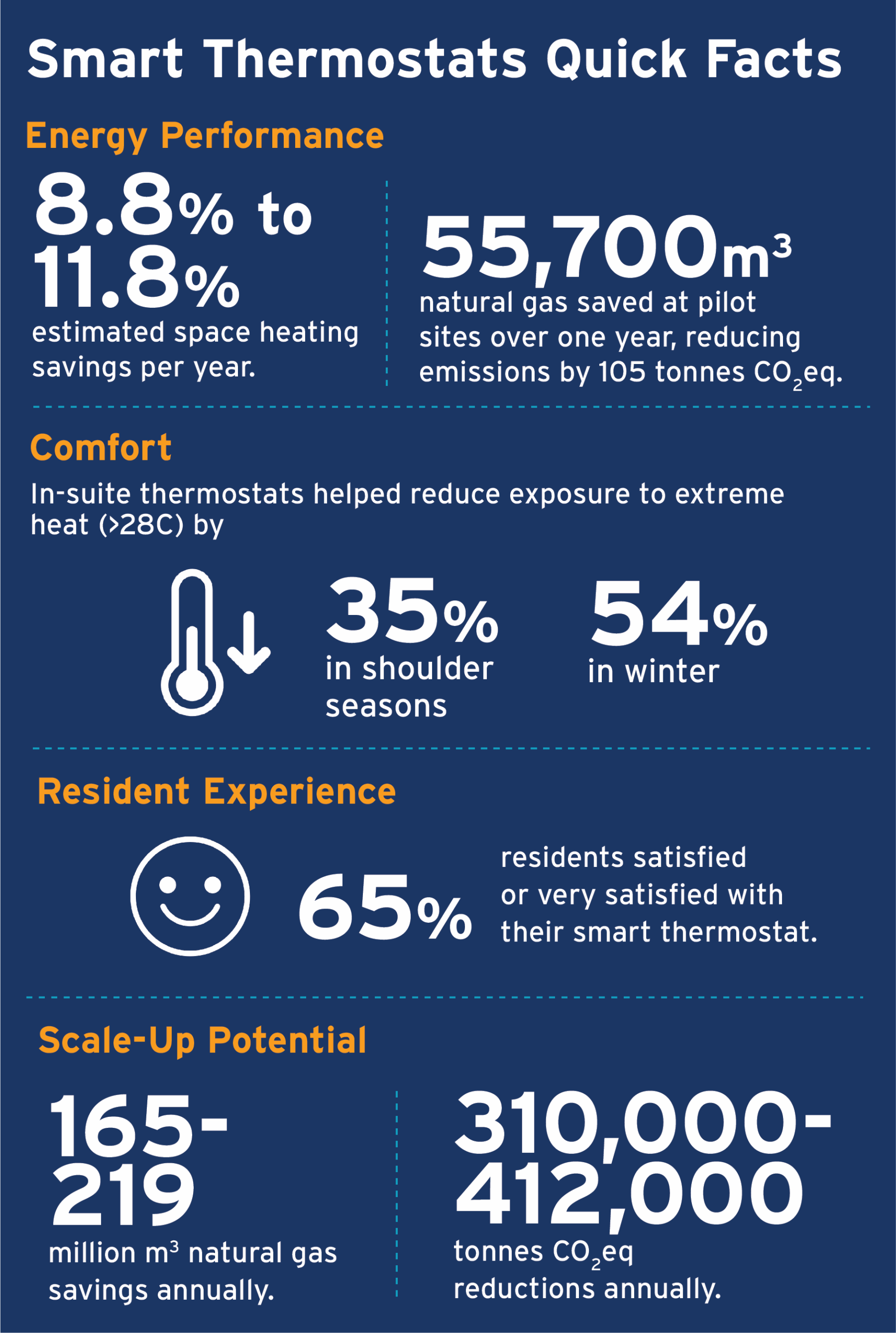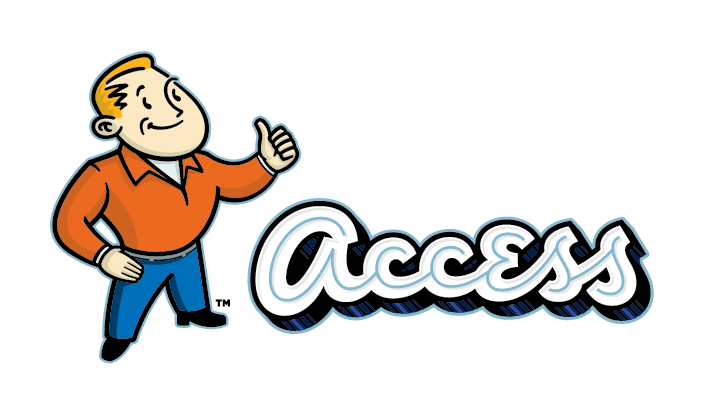Is Your Thermostat Acting Up? Here’s What You Need to Know!
The summer heat can be intense, and when your thermostat isn’t working, it can quickly turn your comfortable home into an unbearable sauna. A malfunctioning thermostat can be incredibly frustrating, leaving you wondering why your air conditioner isn’t kicking on, blowing cold air, or maintaining the desired temperature.
At Access Heating, Air & Plumbing, we understand the urgency of a reliable cooling system. We’ve been serving the greater Treasure Valley area for years, providing expert HVAC services to keep your home comfortable year-round. Let’s dive into the common causes, issues, and solutions when your thermostat decides to take a vacation.
Understanding Your Thermostat: The Brain of Your Cooling System
Think of your thermostat as the command center for your entire cooling system. It’s responsible for sensing the indoor temperature and sending signals to your air conditioner to turn on or off, ensuring your home stays at your preferred comfort level. When this crucial component falters, your entire HVAC system can be thrown into disarray.
Common Causes of a Malfunctioning Thermostat
So, why might your thermostat suddenly go on the fritz? Here are some of the most frequent culprits we encounter in homes:
- Dead or Low Batteries: This is by far the most common and easiest fix, especially for digital thermostats. If your screen is blank or dim, or the thermostat is unresponsive, start here!
- Tripped Circuit Breaker: Your HVAC system, including your thermostat, is connected to your home’s electrical panel. A tripped breaker can cut off power to the entire system.
- Incorrect Settings or Programming: It sounds simple, but accidentally setting your thermostat to “Heat” instead of “Cool,” or having an incorrect schedule programmed, can lead to your AC not running as expected.
- Loose or Damaged Wiring: Over time, vibrations or minor disturbances can cause wires connected to your thermostat to loosen or even corrode. This disrupts the communication between the thermostat and your AC unit.
- Dust and Debris Buildup: Just like any other electronic device, thermostats can accumulate dust and dirt inside, especially on sensors. This can lead to inaccurate temperature readings and poor performance.
- Improper Thermostat Placement: If your thermostat is in direct sunlight, near a heat source (like a lamp or TV), or in a drafty area, it won’t get an accurate reading of your home’s true temperature, leading to inconsistent cooling.
- Faulty Temperature Sensor: The internal sensor that detects your home’s temperature can fail, causing the thermostat to read temperatures incorrectly.
- Outdated or Failing Thermostat: Like all electronics, thermostats have a lifespan. Older models, especially non-programmable ones, can simply wear out or become less reliable over time.
- Underlying HVAC System Issues: Sometimes, the thermostat isn’t the problem at all! Issues like a clogged air filter, low refrigerant, a frozen evaporator coil, or a malfunctioning blower motor can make it seem like your thermostat isn’t working, because the AC isn’t performing as it should.
Issues You Might Experience When Your Thermostat Isn’t Working
A faulty thermostat can manifest in various frustrating ways. You might notice:
- AC Not Turning On At All: This is the most obvious sign. You set your desired temperature, but nothing happens.
- AC Running Constantly (Short Cycling): Your AC turns on for short bursts, then shuts off, only to turn on again quickly. This is inefficient and puts undue stress on your system.
- AC Not Reaching Set Temperature: Your thermostat says 72 degrees, but your home feels much warmer.
- Inconsistent Cooling (Hot and Cold Spots): Some rooms are comfortable, while others are noticeably warmer or cooler.
- Blank or Unresponsive Display: The screen is dark, or pressing buttons does nothing.
- Unexpected Spikes in Energy Bills: A thermostat that isn’t accurately controlling your AC can cause it to run excessively, leading to higher utility costs.
Solutions: What You Can Do (and When to Call a Pro)
Before you panic and search for “emergency AC repair,” there are a few simple troubleshooting steps you can take:
DIY Troubleshooting Steps:
- Check the Batteries: For battery-powered thermostats, replace them with fresh ones. This is often the quickest and cheapest fix!
- Verify Settings: Ensure your thermostat is set to “Cool” mode and the fan is set to “Auto” (unless you want it to run continuously). Double-check your programmed schedule to make sure it aligns with your desired temperatures.
- Inspect Your Circuit Breaker: Go to your electrical panel and look for a tripped breaker labeled for your HVAC system. Flip it completely off, then back on.
- Clean the Thermostat: Carefully remove the thermostat cover. Use a soft brush or compressed air to gently remove any dust or debris from the internal components and sensors.
- Ensure Proper Airflow: A dirty air filter or blocked vents can impede airflow, making your AC struggle. Check and replace your air filter if it’s dirty, and make sure all supply and return vents are open and unobstructed.
- Check for Obvious Wiring Issues (with caution!): Before doing this, TURN OFF POWER TO YOUR HVAC SYSTEM AT THE BREAKER! Gently remove the thermostat cover and inspect the wiring connections. If any wires appear loose, corroded, or disconnected, you might be able to gently reattach them if you’re comfortable. If you’re unsure, or if you see any damaged wires, DO NOT proceed and call a professional.
When to Call Access Heating, Air & Plumbing:
While some thermostat issues are easily resolved, others require the expertise of a professional HVAC technician. Call us if:
- DIY steps don’t resolve the issue.
- You suspect a wiring problem but aren’t comfortable handling electrical components.
- Your thermostat’s screen is blank even after changing batteries or resetting the breaker.
- Your AC is short cycling, constantly running, or not cooling adequately.
- You hear unusual noises from your HVAC unit (grinding, hissing, buzzing).
- You notice ice buildup on your outdoor unit or indoor coils.
- Your energy bills have significantly increased without explanation.
- Your thermostat is old (10+ years) and you’re considering an upgrade.
The Power of Smart Thermostats: A Leap Forward in Home Comfort and Efficiency
If your current thermostat is old, unreliable, or simply doesn’t meet your needs, upgrading to a smart thermostat can unlock a world of benefits, transforming how you manage your home’s climate.
Benefits Beyond Basic Control:
- Significant Energy Savings: This is often the biggest draw. Smart thermostats are designed to optimize your heating and cooling based on your actual needs, not just a static schedule.
- Programmable Thermostats allow you to set different temperatures for various times of the day (e.g., warmer when you’re at work, cooler when you’re home). This can reduce your heating and cooling costs by 10-15% annually.
- Smart (Wi-Fi) Thermostats take energy savings to the next level. They learn your habits, can be controlled remotely via your smartphone, and often offer features like geofencing (adjusting temperature based on your proximity to home) and detailed energy usage reports. Many homeowners report saving hundreds of dollars a year on their utility bills by upgrading. The US Department of Energy estimates an ENERGY STAR-certified smart thermostat can save about 8% on a home’s annual heating and cooling bills, or around $50 a year, with some users reporting much higher savings.
- Unrivaled Convenience: Imagine adjusting your home’s temperature from your office, while on vacation, or even from bed. With smart thermostats, remote control via a smartphone app is standard.
- Adaptive Learning: Some premium smart thermostats learn your preferences over time, automatically creating an optimized schedule that adapts to your routine and even local weather patterns.
- Geofencing: This feature uses your smartphone’s location to detect when you’ve left or are returning home, automatically adjusting the temperature to save energy when you’re away and ensuring comfort upon your arrival.
- Enhanced Comfort: With features like remote room sensors (available with brands like Ecobee and Honeywell), you can address hot and cold spots in different areas of your home, ensuring consistent comfort where it matters most.
- Energy Insights: Many smart thermostats provide detailed energy reports, showing you exactly how much energy your HVAC system is consuming. This data empowers you to make informed decisions to further reduce your energy footprint.
- Integration with Smart Home Systems: Seamlessly connect your thermostat with other smart home devices like voice assistants (Amazon Alexa, Google Assistant, Apple HomeKit) and smart lighting systems for a truly integrated smart home experience.
- HVAC System Longevity: By optimizing run times and preventing your AC from overworking, a smart thermostat can contribute to the longer lifespan of your entire HVAC system, reducing the need for costly repairs.
Popular Brands and Comparisons:
The smart thermostat market offers a range of options, each with its unique strengths:
- Google Nest: Known for their sleek design and “learning” capabilities. The Nest Learning Thermostat learns your schedule over time, while the more affordable Nest Thermostat offers excellent value with app control and energy-saving features. They excel in integrating with the Google ecosystem.
- Ecobee: A strong contender, often praised for its ability to integrate with multiple smart home platforms (Alexa, Google Assistant, Apple HomeKit) and its use of remote sensors to achieve balanced temperatures across your home. The Ecobee Smart Thermostat Premium even includes built-in Alexa and air quality monitoring.
- Honeywell Home (Resideo): A long-standing name in thermostats, Honeywell offers a range of smart options like the Honeywell Home T9 which also uses smart room sensors, and the Sensi line, known for user-friendly apps and broad compatibility.
- Amazon Smart Thermostat: A budget-friendly option, especially appealing for those already invested in the Amazon Alexa ecosystem. It uses “Alexa Hunches” to intelligently adjust temperatures.
When choosing, consider compatibility with your existing HVAC system (some require a “C-wire” for continuous power), desired features (learning, geofencing, remote sensors), and integration with your smart home ecosystem.
Trust Access Heating, Air & Plumbing for Your Smart Thermostat Upgrade
Switching to new technology can sometimes feel daunting, but with Access Heating, Air & Plumbing, it’s a seamless process. Our expert technicians are highly trained and experienced in installing, configuring, and optimizing all major brands of smart thermostats.
We can help you:
- Assess Compatibility: Determine the best smart thermostat model for your specific HVAC system.
- Professional Installation: Ensure your new thermostat is installed correctly and safely, integrating flawlessly with your existing wiring and system.
- Seamless Setup & Configuration: Connect your smart thermostat to your Wi-Fi network and mobile devices, helping you download and navigate the app.
- Personalized Programming: Guide you through setting up schedules, geofencing, and other advanced features to maximize your comfort and energy savings.
- Ongoing Support: Provide answers to your questions and offer troubleshooting tips to ensure you get the most out of your new smart home device.
Investing in a smart thermostat is an investment in your home’s comfort, efficiency, and future. Let Access Heating, Air & Plumbing make the transition effortless.
Cost Considerations for Thermostat Repair & Replacement
The cost to address a thermostat issue can vary widely depending on the problem and the solution.
- DIY Fixes: Often free, aside from the cost of new batteries (typically under $10).
- Professional Diagnosis: Many HVAC companies charge a diagnostic fee, which can range from $70 to $190. This fee is often waived or applied to the repair cost if you proceed with their service.
- Simple Repairs: Fixing loose wiring or cleaning internal components can be relatively inexpensive, likely falling within the $100 – $300 range.
- Thermostat Replacement:
- Basic Programmable Thermostat: Installation costs start around $99 for the unit and labor.
- Smart (Wi-Fi) Thermostat: These units are more expensive, ranging from $150 to $300+ for the unit alone. Professional installation can bring the total cost to anywhere from $250 to $500+, depending on the complexity and model. However, remember the potential long-term energy savings!
- Underlying HVAC System Repair: If the thermostat issue is a symptom of a larger problem with your AC unit (e.g., refrigerant leak, bad compressor, clogged coil), the costs can escalate. For instance, refrigerant recharge can be $150-$400, and a compressor replacement could be $500-$1000+.
Frequently Asked Questions about Thermostats
Q: My digital thermostat screen is blank. Is it definitely the batteries? A: Most likely, yes, if it’s a battery-powered unit. If replacing the batteries doesn’t work, check your circuit breaker. If still blank, there might be a wiring issue or internal thermostat failure, requiring professional help.
Q: How often should I change my thermostat batteries? A: It’s a good practice to replace them annually, typically at the beginning of the cooling or heating season, or immediately if the low-battery indicator appears.
Q: Can a dirty air filter affect my thermostat? A: Yes! A dirty filter restricts airflow, making your AC work harder and potentially leading to performance issues that appear as a thermostat problem, such as not reaching the set temperature. Always check your filter regularly.
Q: Is it worth upgrading to a smart thermostat? A: Absolutely. The energy savings alone can often offset the initial cost within a few years, not to mention the added convenience and control.
Q: How long do thermostats typically last? A: Most traditional thermostats last about 10 years. Smart thermostats can have a similar lifespan, but technology advances might make you want to upgrade sooner for new features and greater efficiency.
Don’t Sweat It – Call Access Heating, Air & Plumbing!
Dealing with a faulty thermostat can be a real headache when temperatures rise. While some issues can be resolved with simple DIY troubleshooting, it’s essential to know when to call in the experts.
At Access Heating, Air & Plumbing, we are your trusted local HVAC professionals in the Treasure Valley and surrounding communities. Our experienced and certified technicians can quickly diagnose any thermostat or AC problem, provide transparent pricing, and offer effective, long-lasting solutions. Whether you need a simple repair or are considering upgrading to a high-efficiency smart thermostat, we’re here to help you stay cool and comfortable.
Don’t let a malfunctioning thermostat ruin your summer. Contact Access Heating, Air & Plumbing today for reliable, expert service!



